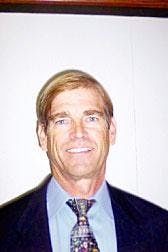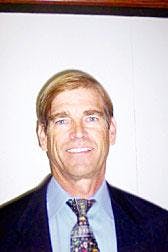Bryce Rhodes has managed tiny but growing Whittier Energy Corp. through its recent transition to public ownership and remains balanced in his assessment of the change.
Already, improved access to capital and the ability to use shares as currency in property acquisitions are helping the company grow. And the formalized structure for managing investments is an improvement, says Rhodes, who became president and CEO last September.
But becoming public also imposes disclosure burdens that private companies don't experience.
"You fly under the radar as a private company," Rhodes says. "As a public company you're scrutinized so you have to be careful about what you say and when you say it—and all the more so in the Sarbanes-Oxley arena."
The Sarbanes-Oxley Act of 2002 tightened corporate governance regulation of publicly traded companies.
Rhodes doesn't think the new scrutiny of Whittier Energy, which became a public company at the end of 2003 after decades as a private concern, has greatly changed the company's decision-making.
It does require new internal checking, however. As Rhodes describes the process: "This good thing or this bad thing is happening. Is it material? Do we need to take it beyond the board level? Is it something that we need to discuss in a press release?"
As a private company, the former Whittier entity didn't have to ask those questions. The shift to public ownership "put everybody's feet to the fire, both our own as management as well as the board."
It also required shareholder education. The formerly public company with which Whittier merged was much smaller than the surviving company and focused on exploration—often one well at a time. Its shareholders received frequent drilling reports.
"We don't operate that way," Rhodes notes. "Those kinds of activities aren't what we're doing; they're not material on a day to day basis."
Those shareholders have had to learn that the new company is larger and has a different character. "You're not going to go from 50¢[/share] to $1.50[/share] overnight if you get good news on a single well."
California producer
The private company, Whittier Energy Co., and its predecessors operated for many years in California as part of the interests of the family for which it is named.
To become public, Whittier arranged what it calls a "reverse triangular merger" with a formerly Canadian producer, Olympic Resources Ltd., which earlier in 2003 had reincorporated in the US. Olympic established an acquisition unit for the merger in September 2003 into the private Whittier entity as a publicly owned subsidiary.
In exchange for their interests in the private company, Whittier shareholders received common shares of the public company plus preferred shares convertible into shares of the new company.
On Dec. 31, 2003, Whittier completed the restructuring with a 1-for-10 reverse stock split and merger of Olympic into the surviving company. The previously issued preferred shares then converted into common shares, adjusted for the split.
The result was a total of 10,068,589 common shares issued and outstanding and no preferred shares, with the formerly private company's owners holding about 85%.
Shares of the surviving company, Whittier Energy, began trading last Jan. 2 on the Over-the-Counter (OTC) Bulletin Board, a normal starting place for newly public companies.
He is working for a listing on the American Stock Exchange, which can happen when Whittier meets criteria such as market capitalization, float (the number of shares available for trading), profitability, and share price.
"We're just not quite there yet," he says.
But he has learned that there's no shortage of help available from investor-relations services promising, "'Give us some shares, and we'll broaden your market. Pay us some money, and we'll put you on TV.' It's hard to wade through. It's easy to spend money and not get any bang for your buck."
Earnings, growth
Whittier Energy's financial performance reflects the spending typical of new companies with aggressive growth strategies.
For the 3 months ending July 30, Whittier Energy reported a net loss of $37,000 on oil and gas revenue of $2.17 million, compared with a loss of $640,000 on revenue of $1.4 million in the same quarter a year earlier.
The recent quarter's loss resulted mainly from exploration expenses of $539,000. Whittier Energy reported no exploration expenses in the same quarter of 2003.
The company began its growth strategy in 2002, 11 years after its incorporation by the Whittier family. The family has invested in the Californian oil and gas industry since the 1800s and until 1979 owned a large interest in Belridge Oil Co., operator of South Belridge heavy oil field in Kern County. Shell Oil Co. acquired Belridge Oil in 1979 in a $3.67 transaction that at the time was the largest such deal in US history.
Since adopting the growth strategy, in addition to the reverse merger, the company has acquired producing properties in Texas and Louisiana in six different transactions, two of them this year.
From yearend 2001 through 2003, the company's total assets rose by 218% to $14.6 million, and proved reserves jumped 685% to 1.96 million boe.
Rhodes cites the most recent deal, the $7.5 million purchase of operated working interests in three South Texas gas fields last June, as an example of how public capital is helping Whittier Energy grow.
The fields have seven producing wells, in which Whittier acquired working interests averaging 78%, and a saltwater disposal well on 1,150 net acres, half developed. The company will earn working interests averaging 61% in production from future development drilling. Net production from the acquired properties was 1.4 MMcfd of gas and 16 b/d of condensate at the time of closing.
To cover part of the acquisition price, Whittier executed a private placement of 1.38 million of its common shares priced at $1.75/share and 3-year warrants for purchase of 1.38 million shares at an exercise price of $2.50/share. Net proceeds to the company of the fully subscribed offering totaled $2.415 million.
For the part of the price equivalent to the estimated value of the proved, developed, producing reserves, the company used bank debt and convertible debt issued to the seller. With debt backed by existing production, equity covers development work without any risk to the company.
The extent to which Whittier Energy can apply the same financial structure to future acquisitions depends, of course, on its stock price.
Whittier Energy's recent growth has come 80% from acquisitions and 20% from drilling. Rhodes hopes to sustain that balance.
Low overhead
Meanwhile, he keeps overhead low. The company has only five full-time employees and uses consultants for accounting, administrative services, and much of its technical work.
Through consultants and the experience of Vice-Pres. and Chief Operating Officer Dan Silverman, a petroleum engineer, Rhodes has access to all the technical skill he thinks he needs.
"We're not trying to do things that are really technically difficult at this point in time," he says.
Is the reverse-merger route to the public equity market a tactic others might follow? Rhodes thinks so.
"It's not a particularly difficult nor a particularly expensive route to take," he says, adding, "You need to go in with your eyes wide open."
For public and private companies alike, he adds, opportunities for liquidity abound.
"If you want to sell your assets as a private company, there are plenty of buyers out there," Rhodes says. "And there are plenty of equity investors on the public side as well."
Career highlights
Bryce W. Rhodes became president and CEO of Whittier Energy Corp. in September 2003 and is a director.
Employment
Before becoming president of Whittier Energy Corp., Rhodes served as vice-president of the private Whittier Energy Co., which was incorporated in 1991, managing all acquisition and exploratory investments and day-to-day activity. During 1985-91, he was an investment analyst with M.H. Whittier Corp., a private investment company. He also is a director of PYR Energy Corp., a public exploration company.
Education
Rhodes holds an MBA from Stanford University and BA degrees in geology and biology from the University of California at Santa Cruz.

